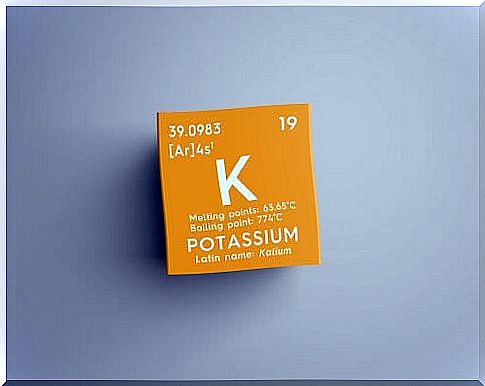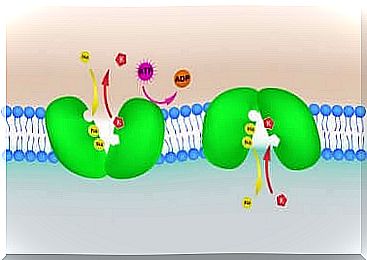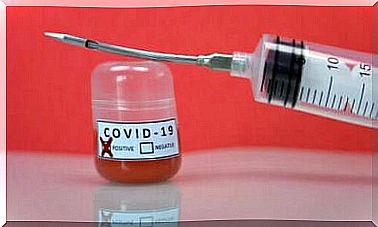Hyperkalemia: What Is It And How Is This Disorder Treated?
With hyperkalaemia, the potassium levels in the blood are increased. There are several treatment options that can work effectively in this case.

When hyperkalemia is referred to an increased concentration of potassium in the blood. If the values are too low, one speaks of hypokalaemia. Potassium levels that are too high are present if the level of this electrolyte is above 5.5 mmol / L. Find out more about this topic today.
What do we need potassium for?

The chemical element potassium is abbreviated in the periodic table with the letter “K”. It is a macromineral that performs important functions, both on a muscular level and in the nervous system.
It is also an electrolyte, like calcium or chlorine. Electrolytes are important in balancing the pressure and concentration of substances inside and outside of cells.
The most important functions of potassium in the human organism are:
- Is involved in the development of the skeleton,
- plays a role in balancing osmotic pressure,
- is involved in protein synthesis,
- is fundamental for nerve impulse transmission
- and is involved in muscle contraction.
Causes of hyperkalemia
In general, increased levels of serum potassium occur due to decreased excretion of potassium by the kidneys. A disturbed shift of potassium outside the cells could also be the cause.
Various factors favor the development of hyperkalemia. These include, for example:
- Increased intake of potassium through diet
- Use of certain medicines that affect the elimination of potassium by the kidneys
- Acute kidney injury
- Chronic nephropathy
Another possible cause of this electrolyte disorder is metabolic acidosis, from which, for example, patients with diabetic ketoacidosis suffer.
On the other hand, one speaks of pseudohyperkalemia when the potassium level is artificially elevated, which can lead to hyperkalemia. In this case, the trigger is usually the prolonged use of a tourniquet, or if the fist is too tightly clenched when taking a blood sample.
In addition, thrombocytosis can lead to pseudohyperkalemia, because in this case the potassium of the blood platelets is released during clotting.
Symptoms of hyperkalemia
In most cases, excessive concentrations of serum potassium go undetected. There are no symptoms due to the deviation in the potassium values, which is why these can usually only be recognized in the context of a systematic examination.
However, if symptoms are present, they will depend on the severity of the hyperkalemia and the rate at which it develops. The first symptoms are usually:
- Muscle weakness
- Tremors in arms or legs
- Tingling sensation
- Paresthesia (uncomfortable body sensation) in the fingers or toes
In addition to these symptoms, they usually experience insomnia, nausea, vomiting, and slow heart activity.
In severe cases, the patient may also suffer from cardiac arrhythmias. This is because the heart needs potassium in order to contract and function properly. Arrhythmia is a disturbed heart rhythm that affects the frequency, intensity and regularity of the nerve impulses.
How is hyperkalemia diagnosed?

This electrolyte disturbance can be recognized by measuring the concentration of the serum electrolytes. The doctor will perform this test when they do an electrocardiogram (EKG) and the results show variations.
Patients with different results usually have renal insufficiency, advanced heart failure, urinary tract obstruction, or have been treated with angiotensin converting enzyme inhibitors ( ACE inhibitors ).
To make a correct diagnosis, the doctor will perform the following examinations:
- Measurement of the concentration of serum potassium
- EKG
- Control of medication
- Evaluation of kidney function
Treatment options
The aim of therapy is to reduce the level of potassium in the blood. In addition, the causative disease must be treated. If hyperkalemic drugs are the triggers, it is important to interrupt drug treatment.
If the concentration of serum potassium is only moderately increased, certain drugs can be used, for example cation exchange resins. The doctor may also prescribe diuretics or perform dialysis.
If the hyperkalemia reaches values above 6.5 mmol / L, but the ECG is not affected, administration of salbutamol or baking soda can be helpful.
If the serum potassium values exceed 6.6 mmol / L and there are also deviations in the ECG, the first step is to protect the heart. The doctor gives the patient calcium chloride to help regulate potassium levels in the blood.
If you have any suspicion of hyperkalemia or if you have any doubts, it is important to see your doctor. Only a specialist can carry out the relevant examinations and, if necessary, initiate therapy.









